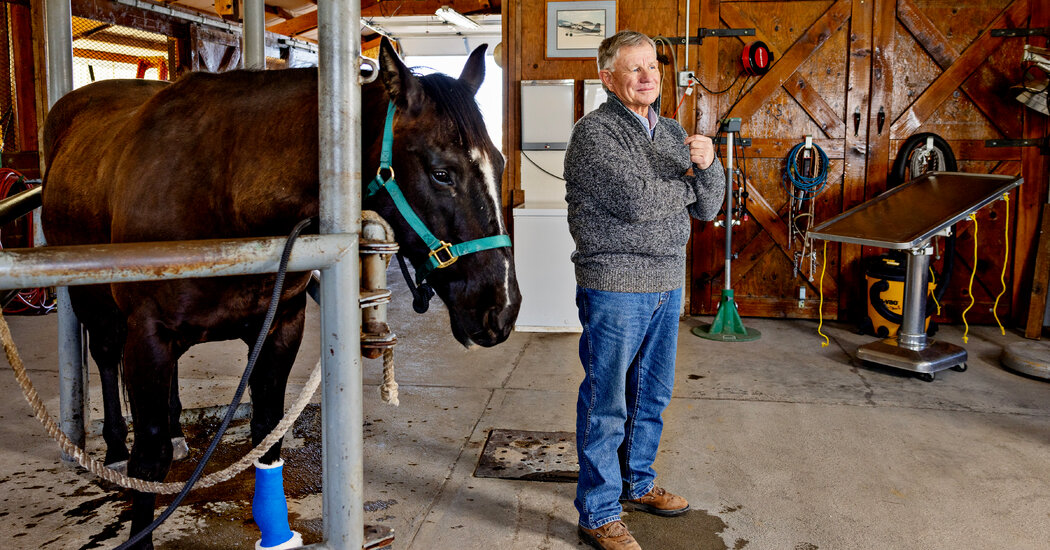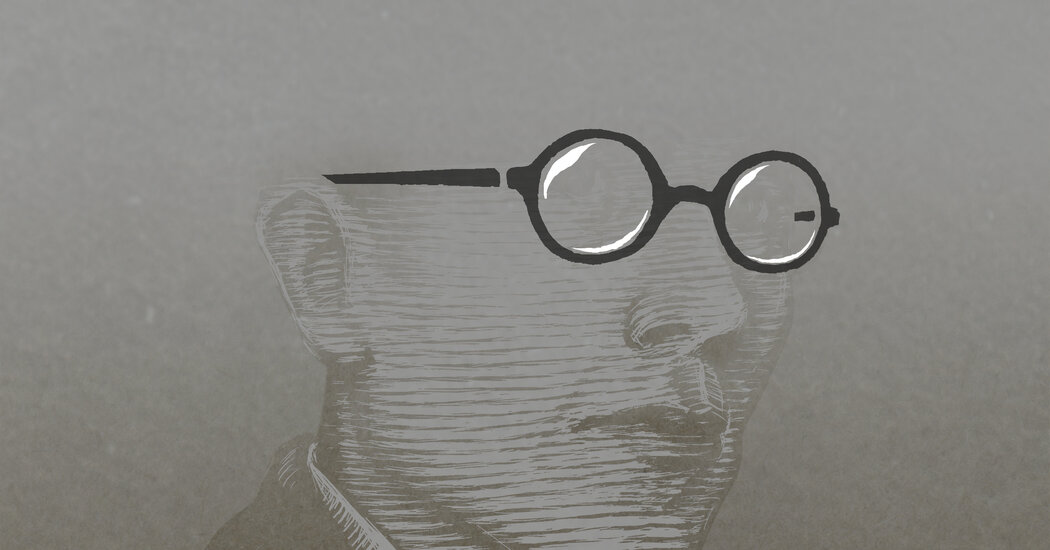Beatrix Potter Is More Than the Creator of Peter Rabbit
This article is part of our Museums special section about how art institutions are reaching out to new artists and attracting new audiences.
Beatrix Potter’s tales about the frolics and misadventures of Peter Rabbit, Squirrel Nutkin, Jemima Puddle-Duck and other animals have charmed children around the globe for well over a century. Now, a new traveling exhibition explores how the English artist and author’s passion and curiosity for the natural world and scientific study inspired her books — and her life.
“She creates these little enchanting, watercolor worlds and fills them with characters in gardens and ponds,” said Trinita Kennedy, a senior curator at the Frist Art Museum in Nashville, where “Beatrix Potter: Drawn to Nature” is on view through Sept. 17. “She is certainly one of the most important children’s book illustrators. But the exhibition tells a more complex story. It shows her as a multifaceted person who had to blaze her own trail, unusual for a Victorian woman.”
The show was created by the Victoria and Albert Museum in London in collaboration with the National Trust, a nonprofit that oversees historical and natural sites in Britain, and opened in London in the 120th anniversary year of “The Tale of Peter Rabbit,” published in 1902. It closed there in January, and after its run at the Frist it will head to the High Museum of Art in Atlanta and the Morgan Library & Museum in New York.
“We show her scientific interests, especially in natural history,” said Annemarie Bilclough, a curator of illustration at the V&A and the organizing curator of the exhibition, “and her work as a sheep farmer and conservationist; the latter is considered by some to be as significant a legacy as her books.”
The family-friendly show features special labels designed for children and cozy, playful, Potter-themed reading areas surrounded by original artwork from some of her stories. “Lately we’ve been more deliberate about showing exhibitions that provide opportunities for intergenerational experiences that are fulfilling for both young and adult visitors,” Ms. Kennedy said.
The presentation, drawn mostly from the V&A’s collection, showcases about 175 items: personal objects and letters, family artworks and photographs, manuscripts, early sketchbooks, watercolors, diaries, scientific drawings, and commercial merchandise. It is organized into four thematic and roughly chronological sections.
“Town and Country” begins with Potter’s early years in London and her family life. Frequent visits to the zoo and museums and vacations in the countryside inspired the backdrop to many Potter stories. “Visitors can see watercolors from throughout her life,” Ms. Kennedy said. “The earliest one is from when she was 9. She always felt an urge to draw or to paint what she saw.”
“Under the Microscope” explores Potter’s interest in scientific study of the natural world. A “schoolroom menagerie,” reimagined from the Potter family’s London home, reflects how Potter’s interest in scientific observation developed by collecting and studying butterflies, beetles, bird eggs, plants, shells, rocks and fossils. Dozens of pets, including rabbits, mice, frogs, bats and lizards, often inspired her stories and artwork. On display are examples of Potter’s earliest observational drawings, some made with the help of a microscope.
As an adult, she developed an interest in mycology, the study of mushrooms and other fungi. She carried out experiments, communicated with experts about her theories and findings, and wrote a scientific paper, accompanied by her illustrations, that was presented at the Linnean Society of London. But “she encountered some barriers,” Mrs. Bilclough said. “She could not attend the meeting herself as a woman,” and her personal writings suggested that because of her lack of professional training and her gender, “she felt that her work wasn’t being taken seriously.”
“A Natural Storyteller” reveals Potter’s journey to becoming a best-selling author. The exhibition focuses on 10 of her 23 “Little Tales” books, introducing characters and the real-life inspirations behind them, including the original illustrated letter she wrote in 1893 to the 5-year-old son of a former governess. The little boy was sick, and she wanted to lift his spirits. “‘I don’t know what to write to you,’” Ms. Kennedy said, recounting Potter’s words, “‘so I shall tell you a story about four little rabbits.’” The “picture letter” with little drawings would evolve into “The Tale of Peter Rabbit,” Potter’s first book. Also on view are other illustrated letters, including one that became “The Tale of Squirrel Nutkin.”
“Living Nature” details Potter’s later years in the Lake District in northwest England, where she eventually acquired more than 4,000 acres. Continued industrialization in the early 20th century, and rail and housing development plans, threatened the landscape, Ms. Kennedy said. “By buying all this land, she prevented that from happening.” Potter left all her properties, including 14 working farms, to the National Trust, for public good and access, and became an accomplished sheep farmer of a breed native to the region, Ms. Kennedy said. “She really was ahead of her time in thinking about preserving nature.”
Next to the main installation is a 4,000-square-foot interactive learning and art-making space. “Visitors can interpret the exhibition’s ideas and concepts in a variety of ways,” said Samantha Andrews, experiential learning director of the Martin ArtQuest Gallery. About 20 stations offer hands-on activities, like making observational drawings by looking closely at small natural specimens, and exploring animals’ natural movement by creating an animated film strip of how rabbits hop or birds fly.
Another experience uses projection mapping to digitally transform visitors into different animals using large-scale insect antennae, bat wings and claws. “It doesn’t feel like you’re going into a kiddie play area,” Mrs. Andrews said. “Adults engage in our space as often as children do.”
“And with letter writing being a lost art, we’re excited to create a simple activity where visitors can create an illustrated postcard,” Mrs. Andrews said. The idea was inspired by Potter’s “picture letters,” where she first “started seeing the delight that other people would receive from her drawings and creative writing.”
Potter’s books were enormously popular from the very beginning, and her success can be attributed to a number of factors, said Leonard S. Marcus, a children’s book historian and the author of “Pictured Worlds,” a book highlighting the work of children’s illustrators from around the world.
“The early tradition of children’s books was all about the idealized image of childhood,” Mr. Marcus said.
Potter and others around that time “were thinking more about children as they are, not children as they ought to be,” he said. “She was a realist from the get-go. And children’s books flourish when there is a growing middle class, and England at that time was the epicenter for the Industrial Revolution.” Picture books that were aesthetically beautiful could be printed in large numbers at an affordable price.
Potter was also a smart businesswoman, who started out designing greeting cards, initially self-published, encouraged marketing “little books for little hands,” and made spinoff products early on, Mr. Marcus said.
“But her books have endured as classics,” he said, because the stories are so quirky and memorable and are so artfully told.
“And they’re all very relatable for kids,” Mr. Marcus said. “I think people will be surprised by how fine her art is, made with great precision and narrative power. They’re full of character and naturalistic detail. Many set up an emotional confrontation with the reader. She’s often dismissed as a sort of fluffy figure in the past, but she was a true artist.”


